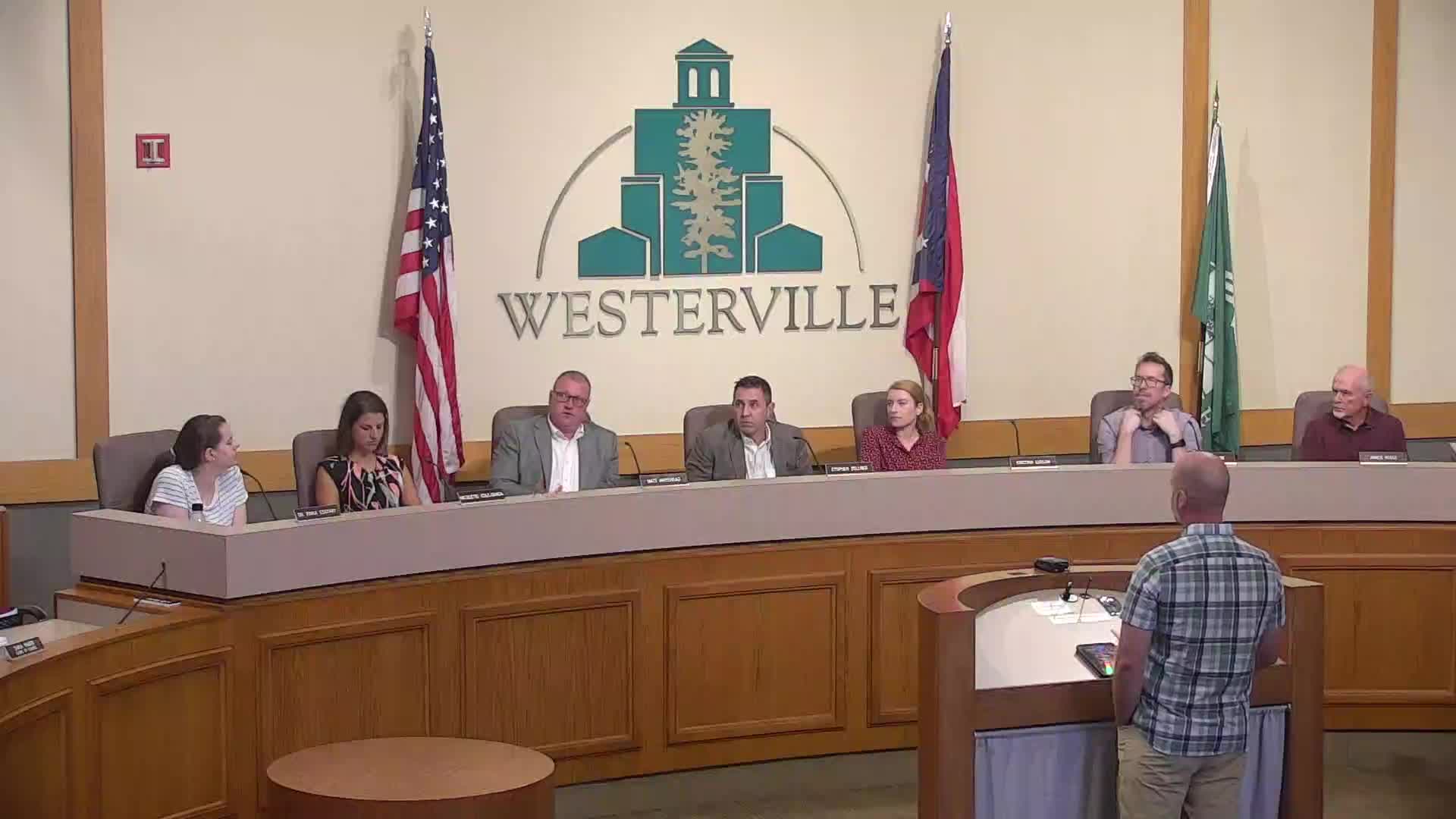Controversial garage variance sparks heated community debate
August 08, 2024 | Westerville, Franklin County, Ohio
This article was created by AI summarizing key points discussed. AI makes mistakes, so for full details and context, please refer to the video of the full meeting. Please report any errors so we can fix them. Report an error »

In a recent meeting of the Westerville Planning and Zoning Board, discussions centered around two variance requests for residential properties, highlighting the challenges of adhering to local zoning codes while accommodating homeowners' needs.
The first case involved a homeowner who sought approval for a garage addition that exceeded the city's height restrictions. The applicant, who had previously purchased a fire-damaged house during the recession, explained that the original structure was significantly smaller than the current one. The proposed garage would not only enhance the property but also address parking limitations, as the existing driveway was deemed insufficient for accommodating vehicles.
Board members expressed concerns regarding the garage's size and its potential impact on the neighborhood's aesthetic. They noted that the homeowner would require multiple variances due to the existing setbacks and the overall footprint of the property. The discussion revealed that the garage's design would match the house's exterior, although no comprehensive renderings were provided for review.
The second variance request, presented by Gary Bumpus, sought permission to construct a detached garage that would exceed the maximum height allowed by city regulations. The property, built in 1920, is situated in an area with specific zoning restrictions, including a minimum lot width that the current site does not meet. Bumpus's proposal aimed to rectify the lack of enclosed parking space on the lot, which is a common issue in the neighborhood.
Both requests prompted a mix of support and opposition from board members, with some questioning the necessity of the variances given the existing zoning laws. Ultimately, the board voted on the first variance, with a split decision reflecting the ongoing debate about balancing individual property rights with community standards. The second request will be further discussed in upcoming meetings as the board continues to navigate the complexities of local zoning regulations.
The first case involved a homeowner who sought approval for a garage addition that exceeded the city's height restrictions. The applicant, who had previously purchased a fire-damaged house during the recession, explained that the original structure was significantly smaller than the current one. The proposed garage would not only enhance the property but also address parking limitations, as the existing driveway was deemed insufficient for accommodating vehicles.
Board members expressed concerns regarding the garage's size and its potential impact on the neighborhood's aesthetic. They noted that the homeowner would require multiple variances due to the existing setbacks and the overall footprint of the property. The discussion revealed that the garage's design would match the house's exterior, although no comprehensive renderings were provided for review.
The second variance request, presented by Gary Bumpus, sought permission to construct a detached garage that would exceed the maximum height allowed by city regulations. The property, built in 1920, is situated in an area with specific zoning restrictions, including a minimum lot width that the current site does not meet. Bumpus's proposal aimed to rectify the lack of enclosed parking space on the lot, which is a common issue in the neighborhood.
Both requests prompted a mix of support and opposition from board members, with some questioning the necessity of the variances given the existing zoning laws. Ultimately, the board voted on the first variance, with a split decision reflecting the ongoing debate about balancing individual property rights with community standards. The second request will be further discussed in upcoming meetings as the board continues to navigate the complexities of local zoning regulations.
View full meeting
This article is based on a recent meeting—watch the full video and explore the complete transcript for deeper insights into the discussion.
View full meeting
